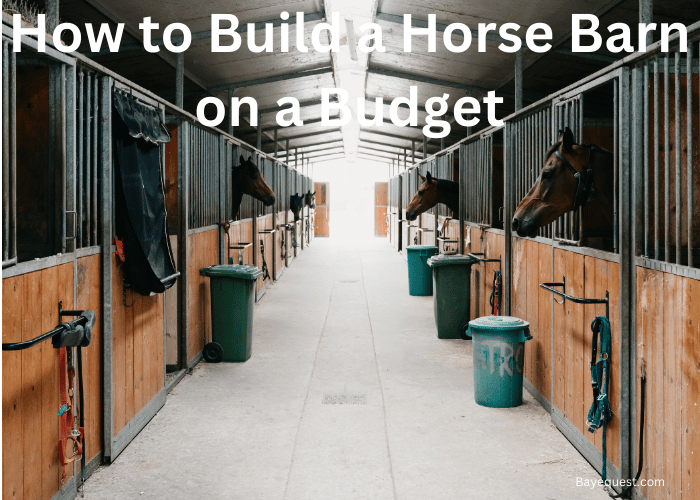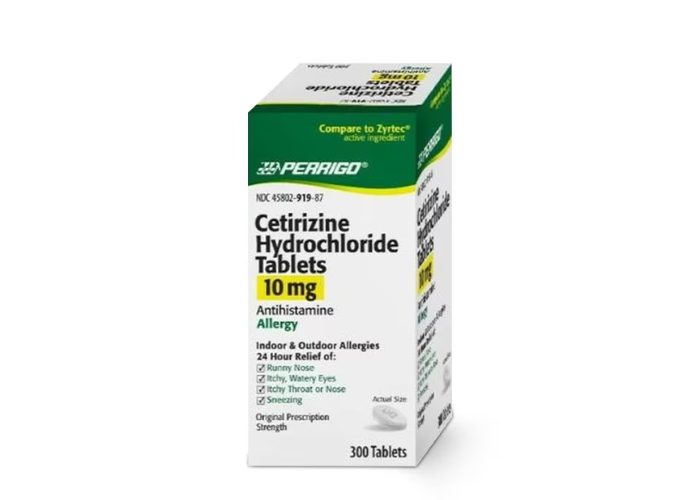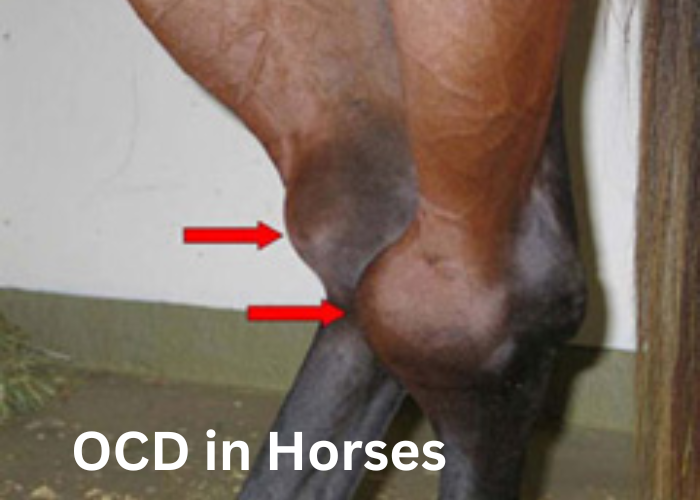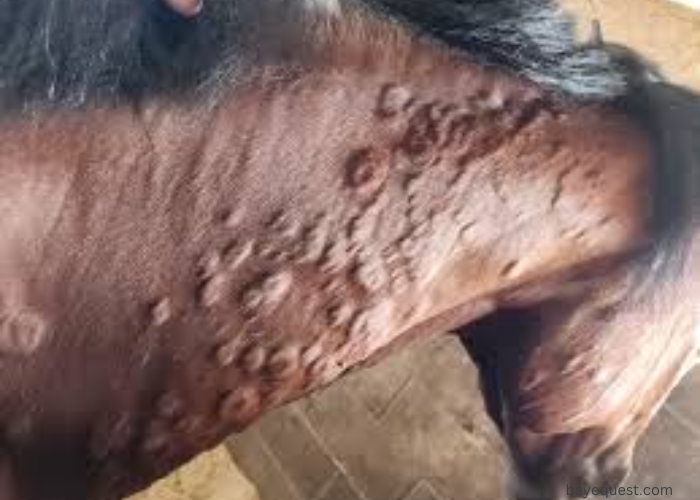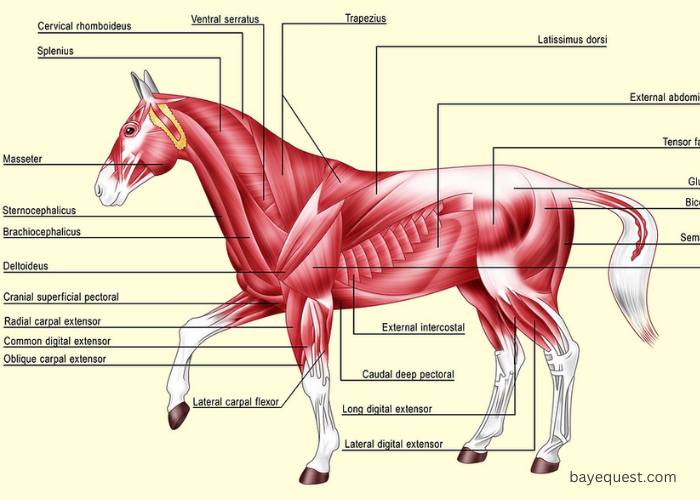The dream of building a horse barn often comes with a hefty price tag. Fear no more. If you’ve ever dreamt of creating a cozy haven for your equine companions without emptying your pockets, you’re in the right stable.
Building a horse barn on a budget doesn’t have to be a hoof-stomping, hair-pulling ordeal. In fact, with a dash of creativity and a whole lot of determination, you can saddle up for a thrifty and thrilling journey.
Based on our experience in this industry, we’ve figured out how to build a horse barn on budget. In this blog, we’ll share practical tips and innovative ideas to help you achieve your dream without breaking the bank.
How to Build a Barn for Horses: Key Takeaways
To build a horse barn on a budget, ensure you;
- Plan your layout well
- Keep it one story
- Work with an experienced team
- Limit the number of stalls
- Consider the shed-row style
- Opt for wooden siding
Before You Get Started
Before you begin building your affordable horse barn, consider a few things. First, make sure you have the necessary tools and equipment on hand.
These include:
- Hammers
- Saws
- Drills
- Levels
- Measuring tapes
Also, remember to invest in personal protective gear such as gloves, safety glasses, and sturdy work boots.
You may also want to familiarize yourself with any local building codes and regulations applicable to your area. Obtaining the necessary permits and approvals upfront can save you time, money, and headaches.
Finally, set a realistic budget and timeline for your barn construction project. Factor in the cost of materials and labor as well as any unexpected expenses that may arise.
Building a barn on a budget requires careful planning and resourcefulness. Be prepared to make compromises and prioritize essentials over luxuries.
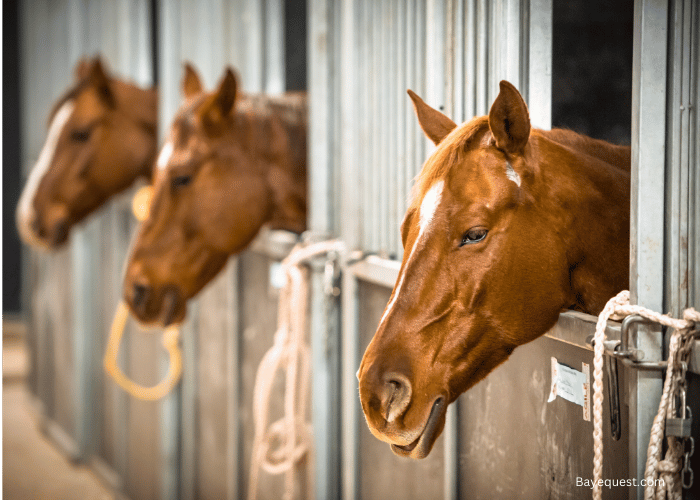
How to Build a Horse Barn on Budget
Here’s a step-by-step guide on how to build a horse barn on a budget.
1. Plan your layout
Take the time to design the layout of your horse barn before construction begins. Consider factors such as the number and size of stalls, the placement of feed and tack rooms, and the traffic flow for both horses and humans.
By creating a well-thought-out layout, you can maximize space efficiency and cut the need for costly alterations during the building process.
2. Keep it one story
Opting for a single-story barn simplifies construction and offers practical benefits for horses and handlers. Single-story barns have better ventilation, lighting, and easier access for cleaning and maintenance.
By eliminating the need for stairs or elevators, you reduce construction costs.
Also read: Can horses go downstairs?
3. Work with an experienced modular team
Modular construction offers many advantages for budget-conscious builders. You can take advantage of prefabricated components manufactured off-site and assembled on-site.
This reduces construction time and minimizes material waste and labor costs. Modular construction also allows for greater flexibility in design and customization.
4. Limit the number of stalls
While it may be tempting to accommodate as many horses as possible, you need to consider the long-term impact. Instead of quantity, focus on quality by providing each horse with adequate space and amenities.
Limiting the number of stalls reduces construction costs while ensuring a comfortable environment for your horses.
5. Consider the shed-row style
I love shed-row barns due to their simple and cost-effective design. In a shed-row barn, stalls are arranged in a single row along one side of a central aisle. The feed and tack rooms are, therefore, located at one end.
This compact layout reduces the barn’s footprint, lowering construction costs. Additionally, shed row barns offer excellent ventilation and natural light.
6. Opt for wooden siding
Wooden cedar siding is a cost-effective and versatile option for barn construction. Not only is wood readily available and easy to work with, but it also offers excellent insulation properties. This helps to regulate temperatures inside the barn and reduce energy costs.
It’s also more beautiful to paint, stain, or match your wood in your desired aesthetic. While other siding materials may offer durability or low maintenance, wooden siding offers both affordability and aesthetic appeal.
7. Request multiple quotes from your barn builder
When it comes to budget-friendly barn construction, shop around and compare prices. Contact many barn builders and request detailed quotes for your project.
Be sure to ask about any extra fees or charges that may apply and the timeline for completion. By obtaining multiple quotes, you can ensure that you’re getting the best value for your investment and avoid any unexpected expenses.
8. Choose cost-effective accessories
Always prioritize functionality and durability over luxury or extravagance. Look for affordable options that meet your needs without sacrificing quality or safety.
For example, consider opting for standard-sized doors and windows instead of custom designs. You may also want to choose energy-efficient lighting fixtures to reduce long-term operating costs.
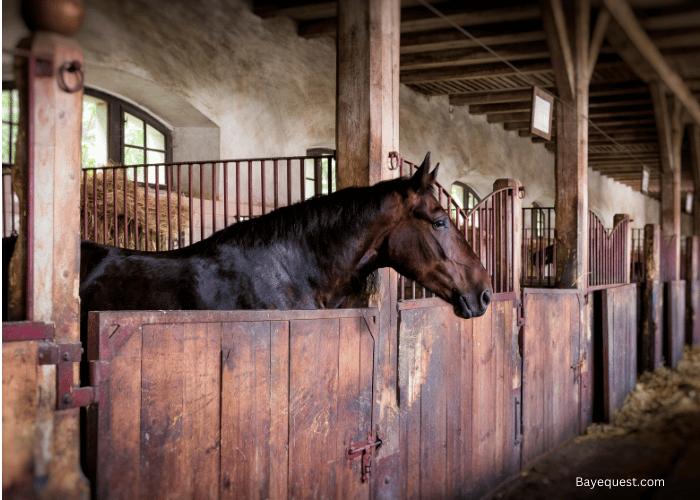
What to Avoid Doing When Building a Horse Barn on a Budget
Here are some of the pitfalls to avoid to ensure the safety, functionality, and longevity of the structure:
- Ignoring local building codes and regulations
- Cutting corners on materials
- Overlooking ventilation
- Neglecting safety features
- Underestimating space requirements
- Ignoring drainage and moisture control
- Rushing the construction process
- Forgetting about future expansion or modifications
FAQs
What is the cheapest way to build a horse barn?
The cheapest way to build a horse barn involves using cost-effective materials and simplified construction methods. Some cost-saving strategies include opting for a shed row-style barn. This has a simpler design and requires fewer materials compared to traditional barn styles. Working with modular construction methods also helps to reduce construction and labor costs.
What is the cheapest style of barn to build?
The cheapest style of barn to build is the shed row style barn. These feature a simple, linear layout with stalls arranged in a single row along one side of a central aisle. This design minimizes the footprint of the barn, reduces the amount of materials needed, and simplifies the construction process.
How big should a barn be for 1 horse?
A standard recommendation size of a stall for one horse is approximately 12 feet by 12 feet. This size provides enough space for the horse to comfortably stand, lie down, and turn around without feeling confined. It also allows for the inclusion of a feed and water trough, as well as space for storing tack and grooming supplies.
How much does it cost to build a 12×12 horse stall?
The cost of building a 12×12 horse stall can vary depending on factors such as location, materials used, and labor costs. On average, you can expect to spend anywhere from $2,500 to $5,000 or more to construct a single horse stall of this size. This cost includes materials such as lumber, siding, roofing, and hardware, as well as construction labor. Factors such as site preparation, foundation work, and customization can also impact the overall cost.
Building Inexpensive Horse Barn: Conclusion
Building a horse barn on a budget is achievable with careful planning, smart decision-making, and a bit of creativity.
Throughout this guide, we’ve explored various tips and considerations to help you navigate the process. From planning your layout to selecting materials and accessories, every decision plays a crucial role in minimizing costs.
Remember, building a horse barn is not just about constructing a structure. It’s about creating a safe and welcoming home for your horses.
So, whether you’re a seasoned equestrian or embarking on your first barn-building adventure, we hope this guide has equipped you with the knowledge and inspiration to turn your budget barn dreams into reality. Happy building.




